CAA News Today
November Deaths in the Arts
posted by Christopher Howard — November 23, 2010
CAA recognizes the lives and achievements of the following artists, designers, scholars, critics, and other men and women whose work has had a significant impact on the visual arts. Of special note is Jean Miller’s text on Todd DeVriese, written especially for CAA.
- Todd DeVriese, an artist, educator, and dean of the College of Fine Arts and Humanities at St. Cloud State University in Minnesota, died on November 15, 2010, while at a conference in India. He was 49
- Helen Escobedo, a Mexican sculptor who explored modern materials in site-specific, outdoor, and public locations, died on September 16, 2010, at the age of 76. She was also a curator and director for several university-based and national museums and galleries
- S. Neil Fujita, a graphic designer, illustrator, and painter who worked on numerous jazz album covers for Columbia Records in the 1950s and on book jackets with his own firm, died on October 23, 2010, at age 89. He also taught for many years at the Philadelphia Museum College of Art, Pratt Institute, and Parsons School of Design.
- Robert Goodnough, a painter from the second generation of Abstract Expressionists whose diverse body of work touched on many modernist styles, died on October 2, 2010, at age 92. He showed his work at Tibor de Nagy and André Emmerich galleries in New York
- Kathryn Hixson, an art critic, former editor of the New Art Examiner, and adjunct professor in various departments at the School of the Art Institute of Chicago, died on November 7, 2010, at the age of 55. She also curated several exhibitions in Texas and Illinois
- Eric Joisel, a French artist who created innovative, complex sculptures in origami, died on October 10, 2010, at the age of 53. His works can be found in the Louvre and in private collections worldwide
- Thomas Leavitt, founding director of the Herbert F. Johnson Museum of Art at Cornell University, died on October 14, 2010, at the age of 80. He also organized more than one hundred exhibitions, including Earth Art with Willoughby Sharp in 1969, and wrote numerous catalogue essays
- Jack Levine, an American painter of Social Realism whose works contained biting satire and caricature, died on November 8, 2010, at the age of 95. His works can be found in major museums nationwide, including the Metropolitan Museum of Art and the National Gallery of Art
- Bernd Lohaus, a German artist who created his sculptures with blocks of stone and rugged beams of Azobe wood, died on November 4, 2010. Born in 1940, he studied under Joseph Beuys and settled in Antwerp, Belgium, in 1966
- Nathan Oliveira, a Bay Area painter who emerged in the 1950s as an Abstract Expressionist but later embraced figuration and landscape, died on November 13, 2010, at age 81. He was a longtime professor of art at Stanford University
- Rozsika Parker, a pioneering British feminist, art historian, psychotherapist, and author of The Subversive Stitch: Embroidery and Making of the Feminine, died on November 5, 2010, at the age of 64. She collaborated with Griselda Pollock on two important books: Old Mistresses and Framing Women: Art and the Women’s Movement 1970–1985
- Chuck Ramirez, an artist and graphic designer based in San Antonio who worked in large-scale photography and site-specific sculptural installations, died on November 6, 2010. He was 48
- Sylvia Sleigh, a celebrated figurative painter and devoted feminist who helped found SOHO20 Gallery in 1973, died on October 24, 2010, at the age of 94. Born in Wales but based in New York since 1961, Sleigh received CAA’s Distinguished Artist Award for Lifetime Achievement in 2008
- Miriam Wosk, an illustrator who designed the first cover of Ms. magazine in 1971 but later concentrated on painting, drawing, and collage, died on November 5, 2010. She was 63
Read all past obituaries in the arts on the CAA website.
Publications Committee and caa.reviews Welcome New Members
posted by Christopher Howard — November 22, 2010
The Publications Committee, which oversees CAA’s scholarly journals and related projects, welcomes two new members who will serve through June 30, 2013. Anthony Elms is editor of WhiteWalls, a publisher of innovative books and a journal, and assistant director of Gallery 400 at the University of Illinois in Chicago. Cynthia Mills is executive editor of American Art, the scholarly journal of the Smithsonian American Art Museum in Washington, DC. She is also academic programs coordinator for the museum, where she supervises the fellowship program and publications prizes and organizes scholarly symposia.
caa.reviews, CAA’s online journal for reviews of books, exhibitions, and projects in art history and visual studies, has added Elizabeth Marlowe to its editorial board, to serve through June 30, 2014. Marlowe is visiting assistant professor of art and art history at Colgate University in Hamilton, New York. In addition, Janet Kraynak, assistant professor of art history at New School University, has become a field editor for the journal. She will commission reviews of exhibitions on modern and contemporary art in New York and internationally though June 30, 2013.
Over the summer, CAA made additional appointments for all three journals. Editors and members of editorial boards and committees are chosen from an open call for nominations and self-nominations, published on the CAA website from January to April each year and publicized through CAA News.
December 2010 Issue of The Art Bulletin Features Raphael, Rauschenberg, and Hōgai
posted by Christopher Howard — November 19, 2010
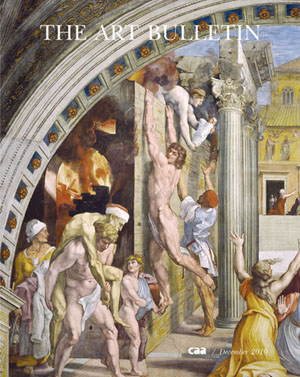 Insightful studies that reframe a Raphael fresco, Robert Rauschenberg’s Combines, and Kano Hōgai’s best-known work are among the six essays in the December 2010 issue of The Art Bulletin, the leading publication of international art-historical scholarship. The issue has been mailed to all individual CAA members who elect to receive the journal, and to all institutional members.
Insightful studies that reframe a Raphael fresco, Robert Rauschenberg’s Combines, and Kano Hōgai’s best-known work are among the six essays in the December 2010 issue of The Art Bulletin, the leading publication of international art-historical scholarship. The issue has been mailed to all individual CAA members who elect to receive the journal, and to all institutional members.
The final issue of the year comprises six essays, two of which delve into art from the Italian peninsula. In “Reflections of Imperialism,” Brenda Longfellow examines the Meta Sudans fountain in Rome, built during the Flavian dynasty, as a signifier of imperial legacy in both Rome and its provinces. For her contribution, Patricia Reilly contends that Raphael’s often-maligned Fire in the Borgo presents the artist’s argument for a new theory of painting. Looking across the Atlantic, Angélica Afandor-Pujol studies the illustrated manuscript known as the “Relación de Michoancán” and investigates issues of mimicry and the appropriation of European artistic traditions by indigenous artists in colonial Mexico.
Moving to the modern times, Chelsea Foxwell reconsiders the iconographic and historical significance of Hōgai’s Merciful Mother Kannon (1888), a masterpiece of Japanese painting, and Tom Folland argues that Rauschenberg’s Combines represent a queering of Abstract Expressionism and, by extension, the culture of postwar modernism. In “The State of Art History,” Terry Smith explores ideas of the contemporary within discourse on modern art and proposes a framework for globally considering the art of today.
In the Reviews section, Gabriela Siracusano assesses Veiled Brightness, a multiauthored book on the history of Maya color. Charles Darwin’s relationship to the visual arts is the focus of Rachael Delue four-book analysis, and Erika Naginski reviews The Blind Spot: An Essay on the Relations between Painting and Sculpture in the Modern Age.
Please read the full table of contents for more details. The next issue, to be published in March 2011, will feature essays on the Bocca della Verità in Rome; the “finger-bone” relics of a Buddha found in Shaanxi Province, China; and relationships between German painting and Czech Cubism.
CAA Announces the Shortlist for Its Two Book Awards
posted by Christopher Howard — November 15, 2010
CAA is pleased to announce the finalists for the Charles Rufus Morey Book Award and the Alfred H. Barr Jr. Award for 2011. The winners of both prizes, along with the recipients of ten other Awards for Distinction, will be announced in December and presented in February during a special ceremony at the Metropolitan Museum of Art in New York, in conjunction with the 99th Annual Conference and Centennial Kickoff.
The Charles Rufus Morey Book Award honors an especially distinguished book in the history of art, published in any language between September 1, 2009, and August 31, 2010. The four finalists are:
- Molly Emma Aitken, The Intelligence of Tradition in Rajput Court Painting (New Haven: Yale University Press, 2010)
- Çiğdem Kafescioğlu, Constantinopolis/Istanbul: Cultural Encounter, Imperial Vision, and the Construction of the Ottoman Capital (University Park: Pennsylvania State University Press, 2009)
- Juliet Koss, Modernism after Wagner (Minneapolis: University of Minnesota Press, 2010)
- Hui-shu Lee, Empresses, Art, and Agency in Song Dynasty China (Seattle: University of Washington Press, 2010)
The Alfred H. Barr Jr. Award for museum scholarship is presented to the author(s) of an especially distinguished catalogue in the history of art, published between September 1, 2009, and August 31, 2010, under the auspices of a museum, library, or collection. The three finalists are:
- Mark Laird and Alicia Weisberg-Roberts, eds., Mrs. Delany and Her Circle (New Haven: Yale Center for British Art, in association with Yale University Press, 2009)
- Darielle Mason, ed., Kantha: The Embroidered Quilts of Bengal from the Jill and Sheldon Bonovitz Collection and the Stella Kramrisch Collection of the Philadelphia Museum of Art (Philadelphia: Philadelphia Museum of Art, 2009)
- Xiaoneng Yang, ed., Tracing the Past, Drawing the Future: Master Ink Painters in Twentieth-Century China (Milan: 5 Continents, 2010)
The presentation of the 2011 Awards for Distinction will take place on Thursday evening, February 10, 6:00–7:30 PM, in the Grace Rainey Rogers Auditorium at the Metropolitan Museum of Art. The event is free and open to the public. The CAA Centennial Reception will follow (ticket required). For more information about CAA’s Awards for Distinction, please contact Lauren Stark, CAA manager of programs, at 212-691-1051, ext. 248.
November Picks from the Committee on Women in the Arts
posted by Christopher Howard — November 10, 2010
 Each month, CAA’s Committee on Women in the Arts produces a curated list, called CWA Picks, of recommended exhibitions and events related to feminist art and scholarship from North America and around the world.
Each month, CAA’s Committee on Women in the Arts produces a curated list, called CWA Picks, of recommended exhibitions and events related to feminist art and scholarship from North America and around the world.
Two CWA Picks for November 2010 focus on conference sessions and a symposium taking place this week. At the National Women’s Studies Association Conference, which starts today in Denver, two Friday sessions explore art and film by women since the 1970s. On Saturday, the American Folk Art Museum in New York is hosting a daylong event broadly examining the role of women in culture from antiquity to the present.
CWA Picks also include four exhibitions. Sally Mann is showing new photographs at the Virginia Museum of Fine Arts, and Lynda Benglis’s touring show stops at the Rhode Island School of Design. Two institutions in Connecticut are presenting historical presentations of needlework and embroidery.
Check out past CWA Picks archived at the bottom of the page, as exhibitions highlighted in previous months are often still on view.
Image: Chandler Family, canvas work with pastoral scene, 1758, wool and silk on linen, 15¾ x 22 7/8 in. Private Collection, Woodstock, Connecticut (artwork in the public domain)
CAA Publishes an Important Addendum to Its Tenure Guidelines for Art Historians
posted by Christopher Howard — November 08, 2010
At its May 2010 meeting, the CAA Board of Directors approved a resolution that updates the Standards for Retention and Tenure of Art Historians. Submitted by Anne Collins Goodyear, vice president for publications, the addendum urges academic tenure-and-promotions committees to consider and evaluate museum publications when making their deliberations. Exhibition catalogues, the resolution notes, may be published by an academic press or museum, or in association with a nonacademic press.
The following paragraphs, which are part of the addendum, provide background for the resolution:
During the past ten years, while academic publishing has been shrinking dramatically, museum publishing has flourished, moving to the forefront as the venue for much substantial scholarship in our field.
Museum exhibition and collection catalogues are not, by and large, peer-reviewed in the traditional sense. The long lead times required for blind peer review do not accommodate the tight schedules of most exhibition catalogues, which must appear when shows open. Yet exhibition catalogues do undergo a form of peer review. Though not blind, it is thorough, as the collaborative curatorial teams that produce exhibition catalogues, and museums’ editorial departments and consultants, carefully evaluate the scholarship contained within, striving to ensure that it is accurate and of the highest possible quality.
In the past, one argument lodged against exhibition catalogues has been that the essays can vary in quality. Some essays in exhibition catalogues—at times in the same catalogue—contain original, important scholarship, while others can be included for political reasons, perhaps to secure certain loans or financial contributions essential to the successful mounting of a show. In fact, this situation is not fundamentally different from scholarship published in festschrifts, anthologies, or other non-museum collections of scholarly essays. It is not unusual for some authors in such publications to be included for practical, rather than scholarly, reasons. Yet this does not disqualify every essay in these publications from being considered in tenure decisions.
Helen Evans of the Metropolitan Museum of Art and Lucy Oakley of the Grey Art Gallery at New York University authored the proposal, with input from the Publications Committee. The Professional Practices Committee, which reviews new and revised Standards and Guidelines, endorsed the proposal, which the board then passed.
The addendum has been added to Standards for Retention and Tenure of Art Historians and joins updates made in 2005 and 2007. CAA encourages you to review all official Standards and Guidelines for professionals in the visual arts.
The Women’s Caucus for Art Announces 2011 Lifetime Achievement Awards
posted by Christopher Howard — October 18, 2010
The Women’s Caucus for Art (WCA), a CAA affiliated society, has announced the 2011 recipients of its Lifetime Achievement Award: Beverly Buchanan, Diane Burko, Ofelia Garcia, Joan Marter, Carolee Schneemann, and Sylvia Sleigh. In addition, WCA has given the 2011 President’s Art and Activism Award to Maria Torres.
The awards ceremony will be held on Saturday, February 12, 2011, during the annual WCA and CAA conferences in New York. The awards ceremony, free and open to the public, will take place from 6:00 to 7:30 PM in the Beekman/Sutton rooms at the Hilton New York, followed by a ticketed gala from 8:00 to 10:00 PM at the nearby American Folk Art Museum. Called LIVE SPACE, the gala will include a walk-around gourmet dinner with three food stations and an open bar, as well as the opportunity to meet the award recipients, network with attendees, and tour the museum.
Ticket prices for LIVE SPACE are $75 for WCA members and $135 for nonmembers (Prices will increase after January 12). CAA members receive a special price of $120. All tickets include reserved seating at the awards presentation. For more information or to purchase tickets, please visit the WCA website.
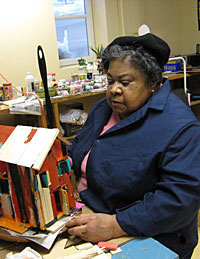 Beverly Buchanan
Beverly Buchanan
Born in 1940, Beverly Buchanan began creating art at an early age. She received a bachelor’s degree in medical technology from Bennett College in Greensboro, North Carolina, and then earned a master’s of science in parasitology and a master’s of public health degree, both from Columbia University. Rather than pursuing a degree in medicine, she decided to focus on making art. Buchanan studied at the Art Students League before moving to Georgia, where she still lives, dividing her time between there and Michigan. Her early sculptures were poured concrete and stone, and she has since worked in a variety of media, focusing on southern vernacular architecture. Buchanan is the recipient of a John Simon Guggenheim Memorial Foundation fellowship, a Pollock-Krasner Foundation award, and two National Endowment for the Arts fellowships. In addition, she was a Georgia Visual Arts honoree and a recipient of an Anonymous Was a Woman Award, and was honored with a Recognition Award by CAA’s Committee for Women in the Arts in 2005.
 Diane Burko
Diane Burko
A painter and photographer who resides in Philadelphia and Bucks County, Pennsylvania, Diane Burko has been involved in the feminist movement since the early 1970s. She is a founding member of WCA who also founded and organized the first multivenue feminist citywide art festival in Philadelphia, called “Philadelphia Focuses on Women in the Visual Arts, Past and Present,” also known as “Focus.” After that event, Burko continued her feminist commitment to the present day, serving on the WCA and CAA boards and on the Philadelphia Art Commission. She is now the chair of CAA’s Committee on Women in the Arts. Burko has been recognized with fellowships from the Bellagio Center, the Terra Summer Residency in Giverny, and the National Endowment for the Arts, among many other honors. One of the first movers and shakers in the feminist art movement, Burko has not yet been fully recognized for her important contributions.
 Ofelia Garcia
Ofelia Garcia
Ofelia Garcia is professor of art at William Paterson University, where she was dean of the College of the Arts and Communication for a decade. She earned her BA at Manhattanville College and her MFA at Tufts University, and was a Kent fellow at Duke University. Garcia has been on the art faculty at Boston College, a critic at the Pennsylvania Academy of the Fine Arts, director of the Print Center in Philadelphia, and president of the Atlanta College of Art and Rosemont College. Also a former president of WCA, Garcia has served on numerous boards, including those of CAA, the American Council on Education, and Haverford College; she was most recently board chair of the Jersey City Museum. Garcia now serves as vice chair of the New Jersey State Council on the Arts, on the Hudson County Art Commission, and on the boards of the Brodsky Center for Innovative Editions and Catholics for Choice.
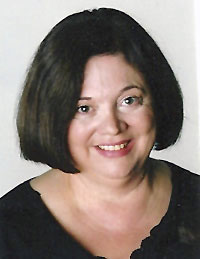 Joan Marter
Joan Marter
Joan Marter is distinguished professor of art history at Rutgers University. She received her PhD from the University of Delaware and has lectured and published widely. She is currently editor-in-chief of The Grove Encyclopedia of American Art, a five-volume reference set forthcoming from Oxford University Press in 2010. Marter serves as editor of Woman’s Art Journal, in print continuously for thirty-one years. She has published monographs on artists such as Alexander Calder and has written extensively about Abstract Expressionism and women artists. In 2004, she was inducted into the Alumni Wall of Fame at the University of Delaware. A former member of the CAA Board of Directors, Marter is currently president of the Dorothy Dehner Foundation for the Visual Arts.
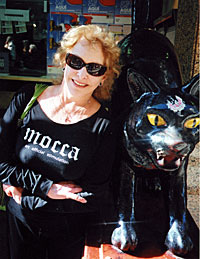 Carolee Schneemann
Carolee Schneemann
Carolee Schneemann is a multidisciplinary artist whose radical works in performance art, installation, film, and video are widely influential. The history of her imagery is characterized by research into archaic visual traditions, pleasure wrested from suppressive taboos, and the body of the artist in dynamic relationship with the social body. Her involvement in collaborative groups includes the Judson Dance Theater, Experiments in Art and Technology, and many feminist organizations. Schneemann has exhibited her work at the Museum of Contemporary Art in Los Angeles, and in New York at the New Museum of Contemporary Art, the Museum of Modern Art, and the Whitney Museum of American Art. Internationally, she has shown at the Museo Nacional Centro de Arte Reina Sofía in Madrid, the Moderna Museet in Stockholm, and the Centre George Pompidou in Paris. Her recent multichannel video installation Precarious was presented at Tate Liverpool in September 2009. The Samuel Dorsky Museum of Art at the State University of New York in New Paltz presented a major retrospective in summer 2010.
 Sylvia Sleigh
Sylvia Sleigh
Born in 1916 in Wales, Sylvia Sleigh paints portraits in a realist style, informed by sources ranging from the Pre-Raphaelites to famous portraits throughout history. Her first solo exhibition was held in 1953 at the Kensington Art Gallery; her most recent, at I-20 Gallery in New York, closed in January 2010. She married the art critic Lawrence Alloway in 1954, with whom she became part of the London avant-garde. They later moved to the United States, where she continued painting and showing her work. In 1970, Sleigh became actively involved in feminism and started painting life-size nudes in her precise, realist style. She was active in many of the first women-artist-run galleries, including A.I.R. Gallery and Soho 20. Her work can be found in numerous major public and private collections. Sleigh was honored with CAA’s Distinguished Artist Award for Lifetime Achievement in 2008.
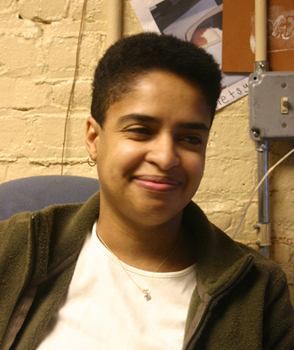 Maria Torres
Maria Torres
Winner of the 2011 Presidents Art and Activism Award is Maria Torres, president and chief operations officer of the Point Community Development Corporation, a nonprofit organization dedicated to youth development and the cultural and economic revitalization of the Hunts Point section of the South Bronx in New York. The Point’s mission is to encourage the arts, local enterprise, responsible ecology, and “self-investment” in a community traditionally defined in terms of its poverty, crime rate, poor schools, and substandard housing. In 1993, Torres received a BS from Cornell University. That same year, she launched the Neighborhood Internship Bank for at-risk youth, the first employment service of its kind in the South Bronx, and established La Marqueta, an outdoor community market aimed at lowering the barriers to the marketplace for neighborhood entrepreneurs. In 1994, Torres worked with Paul Lipson, Mildred Ruiz, and Steven Sapp to found the Point. Recipient of Union Square Award in 1998, she served on the Board of the Bronx Charter School for the Arts from 2002 to 2009.
About the Awards
The WCA Lifetime Achievement Awards were first presented in 1979 in President Jimmy Carter’s Oval Office to Isabel Bishop, Selma Burke, Alice Neel, Louise Nevelson, and Georgia O’Keeffe. Past honorees have represented the full range of distinguished achievement in the visual arts, and this year’s awardees are no exception, with considerable accomplishments and contributions represented by their professional efforts.
October Picks of Exhibitions and Events from CAA’s Committee on Women in the Arts
posted by Christopher Howard — October 14, 2010
 Each month, CAA’s Committee on Women in the Arts produces a curated list, called CWA Picks, of recommended exhibitions and events related to feminist art and scholarship from North America and around the world.
Each month, CAA’s Committee on Women in the Arts produces a curated list, called CWA Picks, of recommended exhibitions and events related to feminist art and scholarship from North America and around the world.
Three CWA Picks for October 2010 focus on Washington, DC, where the first annual Feminist Art History Conference, called “Continuing the Legacy: Honoring the Work of Norma Broude and Mary D. Garrard,” takes place at American University in early November. The free event has an October 22 registration deadline, so sign up now. If you’re in our nation’s capitol, two exhibitions are worth checking out: Loïs Mailou Jones: A Life in Vibrant Color and Books without Words: The Visual Poetry of Elisabetta Gut, both at the National Museum of Women in the Arts.
In New York, the Jewish Museum offers Shifting the Gaze: Painting and Feminism, featuring work made after 1960 by major contemporary artists. In addition, the Brooklyn Museum, which is hosting Seductive Subversion: Women Pop Artists, 1958–1968, a CWA Pick from September, will present a panel discussion titled “So Different, So Appealing: Women and the Pop Art Movement.”
Check out past CWA Picks archived at the bottom of the page, as exhibitions highlighted in previous months are often still on view.
Image: Elisabetta Gut, Libro-nido (Nest-book), 1982, found bird nest, paper, string, and sealing wax, 6¾ x 7 x 1 in. (artwork © Elisabetta Gut)
Fall 2010 Art Journal Published
posted by Christopher Howard — October 13, 2010
 The Fall 2010 Art Journal, CAA’s quarterly of cutting-edge art and ideas, has just been published. The issue explores the broad theme of “war and other disasters” in six essays, three artists’ projects, and an interview.
The Fall 2010 Art Journal, CAA’s quarterly of cutting-edge art and ideas, has just been published. The issue explores the broad theme of “war and other disasters” in six essays, three artists’ projects, and an interview.
Katy Siegel, Art Journal’s editor-in-chief, observes that the contributors “point to ways in which we are still living in a postwar world, working through the rubble of the atomic bomb and under the shadow of its future use.” David McCarthy writes on David Smith’s Spectres sculptures from the mid-1940s, and a pen-and-ink sketch by Smith graces the issue’s cover. Cécile Whiting’s essay explores early-1960s works by Californian artists who were intrigued by World War II, and Jung-Ah Woo frames On Kawara’s Date Paintings as manifestations of tragedy, violence, and death. Through the lenses of politics, reenactment, and memory, Claire Gilman looks at drawings by Andrea Bowers, Sam Durant, and other contemporary artists.
Two artists’ projects join P-Van, the second comic from Kerry James Marshall’s Dailies series to appear on the inside covers of Art Journal. Walid Raad’s Appendix XVIII: Plates 88–107 obliquely captures three decades of war in Lebanon in letters, script, numerals, indices, and more, set against colored backgrounds. Yun-Fei Ji’s Three Gorges Dam Migration is presented along with photographs and an interview that document the making of the monumental scroll. In an accompanying essay, Jonathan Spence discusses elements of Chinese history, culture, and politics in the scroll. Elsewhere in the issue, Joan Kee theorizes the aesthetic approaches of East Asian artists in “The Curious Case of Contemporary Ink Painting.”
In the Reviews section, Margaret Iversen assesses Douglas Eklund’s catalogue for his exhibition The Pictures Generation, 1974–1984, and William McManus examines three recent books on the dancer, choreographer, and filmmaker Yvonne Rainer.
A benefit of CAA membership, Art Journal is mailed to those individual members who elect to receive it and to all institutional members.
October Obituaries in the Arts
posted by Christopher Howard — October 12, 2010
CAA recognizes the lives and achievements of the following artists, scholars, curators, architects, filmmakers, museum directors, and other important figures in the visual arts.
- Ralph T. Coe, former director of the Nelson-Atkins Museum of Art and a collector and curator of Native American art, died on September 14, 2010, at the age of 81. Among his pioneering exhibitions are Sacred Circles: 2,000 Years of North American Indian Art (1976) and Lost and Found Traditions: Native American Art, 1965–1985 (1986)
- Tony Curtis, an actor in such films as The Defiant Ones and Some Like It Hot who was also known for Surrealist-inspired paintings, died on September 29, 2010. He was 85
- Robin Gibson, a curator at the National Portrait Gallery in London for his entire career, died on August 9, 2010, age 66. He established the museum’s photography department, focused on twentieth-century works, and even commissioned pieces for the collection, all while organizing exhibitions and authoring catalogues
- Jill Johnston, a feminist, dance critic for the Village Voice, and author of Lesbian Nation, died on September 18, 2010, at the age of 81. She also contributed to Art in America and wrote the controversial book Jasper Johns: Privileged Information
- Stephen Pace, a painter whose early work in the style of the New York School developed into expressionist-informed depictions of figures and landscapes, died on September 23, 2010, age 91. Emerging in the early 1950s in New York, he also taught art at Pratt Institute, Bard College, and American University
- Arthur Penn, a movie, television, and stage director whose innovative 1967 film Bonnie and Clyde paved the way for the New American Cinema, died on September 28, 2010. He was 88
- Rhonda Saad, an art historian and curator who was a doctoral student at Northwestern University, died on September 11, 2010, at the age of 31. The Association for Modern and Contemporary Art of the Arab World, Iran, and Turkey, a CAA affiliated society for which she was treasurer, has established the Rhonda A. Saad Prize for Best Graduate Paper in Arab Art in her honor
- Johannes Spalt, an Austrian architect who cofounded the group Arbeitsgruppe 4 that brought modernism to rural Austria, died on October 2, 2010. He was 90
- Giorgio Torraca, a professor at the University of Rome La Sapienza and former deputy director of the International Centre for the Study of the Preservation and Restoration of Cultural Property, died on September 25, 2010. Born in 1927, he developed programs and courses on the conservation of masonry, mosaics, and earthen materials for nonscientists
Read all past obituaries in the arts on the CAA website.


